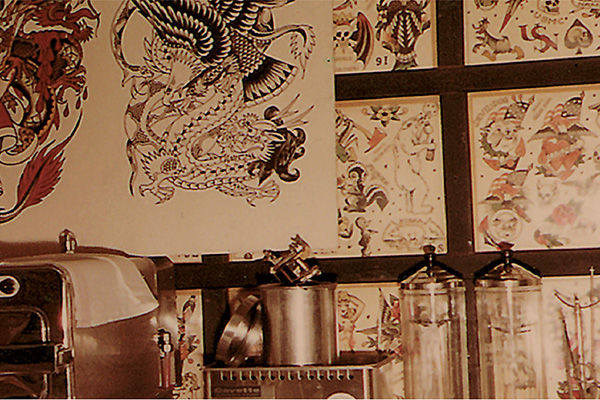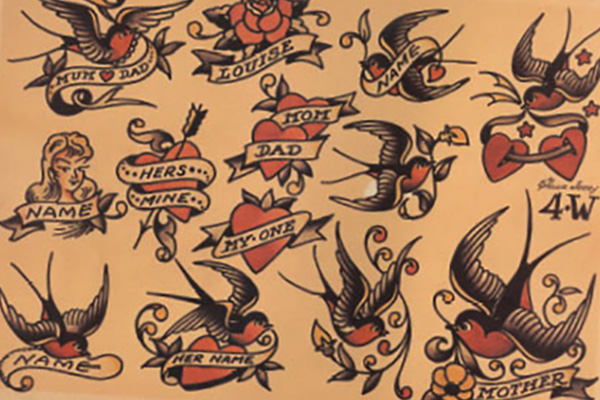Jerry was continually frustrated by other artists (who he called “brain pickers”) copying his work. He refused to do big chest or back pieces on customers who had tattoos by artists he didn't respect. His letters to fellow tattoo artists are a testament to his devotion to the craft of tattooing. He goes over detail after detail, from techniques for shading to the “possibilities of tone and texture” to “crash” effects. Jerry was in a constant quest to deepen his own skills. “My slogan is,” he states, “I haven't done my best yet, only my best so far.”
Yet tattooing was just one dimension of Jerry’s life. He continued to pursue his maritime interests as captain of a three-masted schooner that toured the islands. He had his own radio show called Old Ironsides on KRTG during which he alternated between political rants and reading his own poetry. He taught himself to be an electrician, which helped him innovate his tattoo machines. He played in a jazz band. He toured around in a canary yellow Thunderbird and he was out on his Harley when he had the heart attack that would take his life (after collapsing in a cold sweat, he got back on his bike and rode home). The day before Jerry died, he wrote a letter to friend and fellow tattoo artist, Paul Rogers, joking that he was going to “down some ground seahorse meat, pulverized ratshit, snake skin, lizard eggs, dried snails and dried bat skin and by go we will see who is the best doctor in the end.” He asked that upon his death, his shop be passed on to his protégés, Don Ed Hardy and Mike Malone (aka Rollo Banks). If neither took the place over, Jerry left instructions it was to be burned to the ground. Malone took possession of the shop and ran it for almost 25 years.









